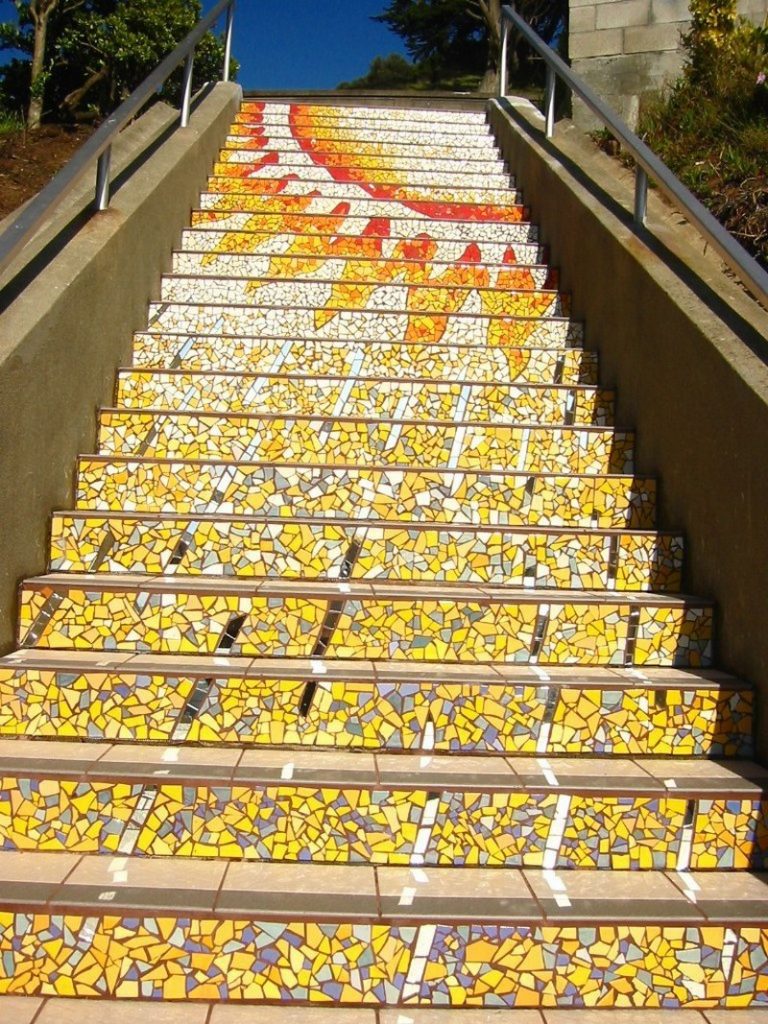Last Updated on July 4, 2025 by teamobn
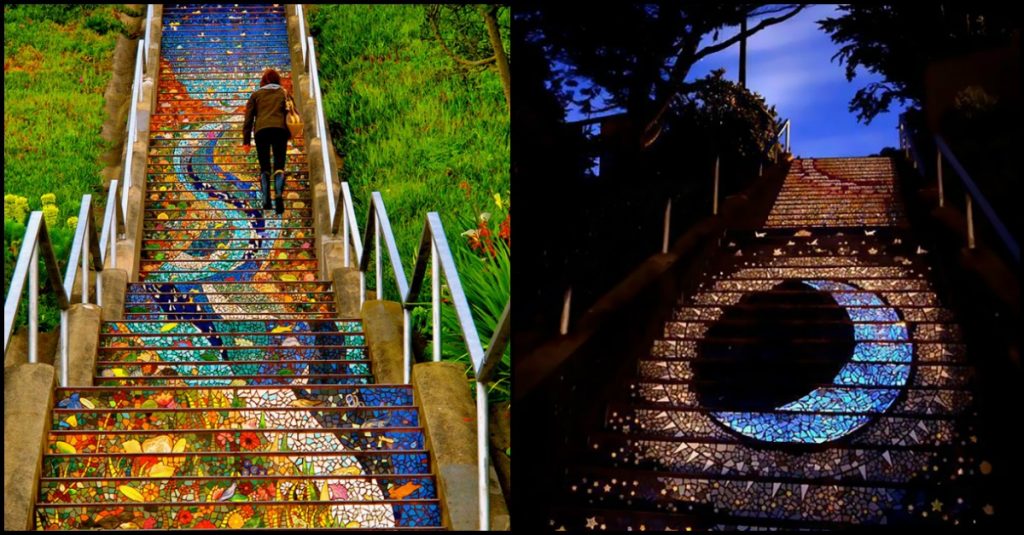
There are parts of the house that are just functional and little attention to aesthetics are given to them. The staircases are often one of those.
If you are contemplating a remodeling project on your house, you might be pondering sprucing up your staircase. Whether it is time to update the wooden panels, or simply paint them, there are various options available to you. And this is not just a cosmetic change that you can do easily.
It is a process that may affect the structural integrity of your home. Although it can be done by a professional, you may want to do some research on the matter first so that you can consider your options before you take any steps.
What Are The Common Types Of Staircases?
You’ll be surprised at what you can do to make it look unique, even short of amazing. Here’s an example of something that might just inspire you to redesign your staircase. ????
We will provide you with 7 common types of staircases to select from. This may help you choose which staircase is the best fit for your home, office, store, or building.
1. Y-Shaped Staircase
Y-Shaped Staircases go around 180°, for any 1 or 2 landings. Y-shaped staircases are similar to the winding stairs, which are essentially straight staircases with a change in direction. However, the Y-shaped stair is essentially two straight staircases joined in the middle by a semi-circular landing.

2. Straight Staircase
One of the best descriptions of a straight staircase is a ladder that connects two floors or levels in a building whose flights of stairs are straight. A vertical staircase is a type of staircase that, as the name suggests, is vertically straight. Straight stairs are commonly found in buildings that were built during the late Middle Ages (1300s-1500s) and early modern period (1600s-1700s), although some buildings were built during the Colonial and Federal periods (1700s-1800s) have, too.
The 16th Avenue Tiled Steps Project in San Francisco is a perfect example. It’s a community-led project that’s sponsored by KZ Tile, a major tile setting company in the state. They worked on it for one and a half years, and the result is well worth the effort and the wait!
3. Straight Staircase with Landing
A straight staircase with a central landing refers to the open area at the small landing in the center of the stairs when steps take a rest or pause before they continue going downstairs.

4. Spiral Staircase
Spiral staircases are one of the most popular staircase styles. We sometimes refer to the spiral staircase as a “spiral stairway”. As the name suggests, spiral staircases enclose an entire circle of steps connected by a central pillar. This type of staircase is also known as a helical or screw stair as well as a circular stair, as it winds around a central column as it rises. (www.gamepur.com)
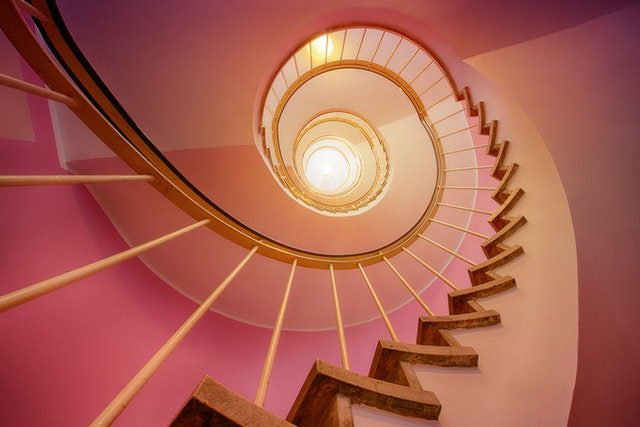
5. L-Shaped Staircase
An L-shaped staircase is a variation of the straight staircase with a bend at the middle, upper or lower part of the stairs. It is created by adding a turn to one straight section of the stair or by curving the entire stair into an L. An L-shaped stair is an attractive option for small homes where space is limited. In addition, the L-shaped stair is better for small rooms, such as those found in the corners of a room.
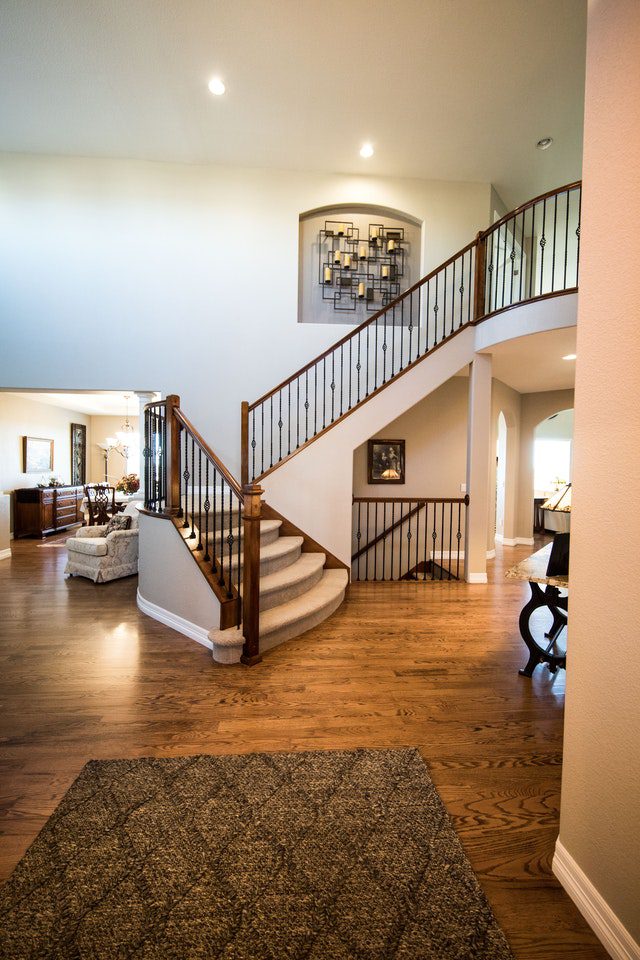
6. Attic Staircase
Attic staircases, also known as ladder staircases, are one of the highest space-saving staircases. This is customized to maximize living space. On the other hand, attic staircases have higher step levels, usually making it harder to climb, and more difficult to go downstairs.
7. Half Turn Staircase
If two landings are needed to finish the 180° go-around, the staircase is named the half-turn staircase, also known as a U-shaped staircase. Half turn stairs are a popular choice for those living or working in a tight space. With a Half turn stair, the landing is part of the design, which makes it a more efficient use of space. Half turn stairs also maximize the use of the space by placing the handrails on the exterior of the stairs, which makes them safer and more convenient.
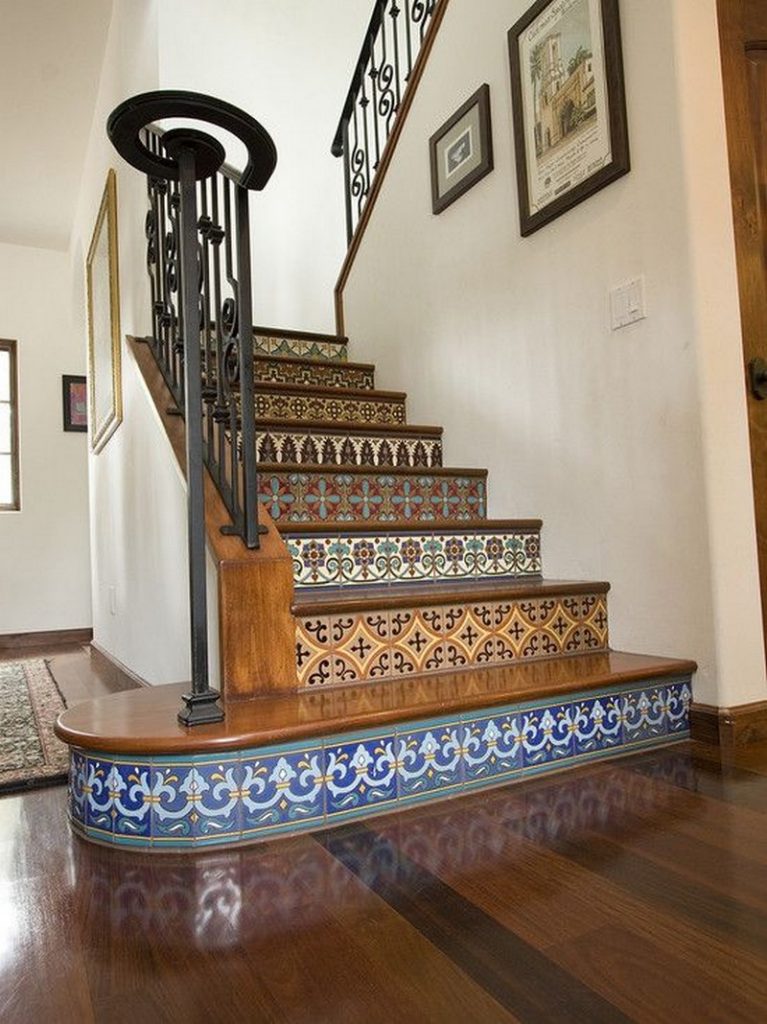
Just look at the details of this truly amazing work of art. And yes – it does ‘glow in the dark as the tiles reflect the moonlight at night! It becomes even more impressive during sunrise and sunset. The play of lights emphasizes the changes in its overall appearance. ????
But you don’t have to have a staircase with a hundred steps to make your own staircase at home look great. Take a closer look at our gallery and find inspiration from various designs for staircases. Whether it’s indoors or outdoors, these steps can add distinction in terms of design to your home.
Do you want to convert your staircase into one of the staircases below?
View our album below to see more of this amazing tiled staircase. We’ve also added a few more tiled step examples which you might also like and get inspiration from!
Tiled Staircase Gallery
Click on any image to start the lightbox display. Use your Esc key to close the lightbox. You can also view the images as a slideshow if you prefer?

Tile Choices That Handle Heavy Foot Traffic
Busy steps are unforgiving. Choose tiles that shrug off constant impact and still look fresh after years of family life and muddy shoes.
Porcelain Beats Ceramic for Commercial Wear
Porcelain is fired hotter, so it forms a dense, almost glass-like body. That density resists scratches from sand carried on soles. It also blocks moisture that can freeze and pop weaker tiles. Builders trust porcelain in airports and shopping malls. A residential tiled staircase benefits from the same resilience without a premium price jump.
Stone-Look Porcelain Gives Luxury Without Upkeep
Natural slate and travertine look stunning yet demand sealing. Ink-jet porcelain now copies those textures with remarkable accuracy. The printed layer fuses into the tile during firing, so colors will not flake or fade. You enjoy the warmth of stone visuals while skipping yearly maintenance rituals.
Through-Body Color Masks Chips and Scuffs
A full-body porcelain tile carries pigment all the way through. If a corner ever chips, the same tone shows, not a stark white base. Small blemishes vanish at a glance. This feature extends the aesthetic life of a staircase in rental homes or cafés where turnover is high.
PEI Ratings Guide Smart Selection
The Porcelain Enamel Institute scale runs from I to V. Aim for Class IV or V on stairs. These grades are laboratory-tested to survive heavy carts and boots. Picking lower grades saves little money yet invites early replacement. Read packaging or spec sheets before purchase.
Installation Essentials: Full Thin-Set Coverage
Durable tiles still fail if voids hide beneath. Comb thin-set on both tread and tile, then press firmly to expel air pockets. Complete coverage stops cracks caused by point loads, such as a stiletto heel on a stair edge.
Slip-Resistant Finishes to Keep a Tiled Staircase Safe
A beautiful staircase must also protect every visitor. Add discreet traction features so wet shoes, socks, or children’s feet never meet a slick surprise.
Textured Surface Tiles Stop Slides
Manufacturers mold micro-grooves or raised grains into the glaze. These patterns barely change appearance but enhance friction dramatically. Your palm should feel subtle grit when you test a sample. The added grip remains effective even after daily cleaning.
Matte Beats Gloss for Everyday Safety
High-gloss finishes mirror light and act like ice under moisture. Matte surfaces scatter reflections and provide more natural traction. They hide smudges as a bonus. Choose a low-sheen option for treads while reserving glossy accents for vertical risers where feet never land.
Clear Anti-Slip Treatments Revive Existing Steps
Already tiled your staircase? Apply a water-based micro-etch solution. It reacts with minerals inside the glaze and forms microscopic pores. The surface feels unchanged to touch yet grips rubber and leather soles far better. One bottle handles an entire flight and lasts several years.
Grout Lines as Built-In Traction Strips
Wider grout joints create tiny ridges that interrupt a sliding sole. Use three-millimeter spacers instead of the minimum two. Epoxy grout resists staining and stays slightly textured. Color-match it to the tile so safety disappears into the design.
Lighting Angle Reduces Shine and Risk
Harsh overhead bulbs can glare off even matte tiles, confusing depth perception. Install low-angle LED strips under each nosing. Light grazes the tread, highlights texture, and removes dark shadows. Guests see every step clearly, whether carrying laundry or walking half awake at dawn.
Conclusion
A tiled staircase blends art with daily function. Pick porcelain rated for heavy traffic so color and pattern stay crisp. Matte or textured finishes plus low-angle lighting guard against slips and glare. Quality grout and routine cleaning keep joints bright and treads safe. Plan with care and your steps will welcome guests and lift home value for decades.
If you liked these, you will also like viewing these other staircase designs…

